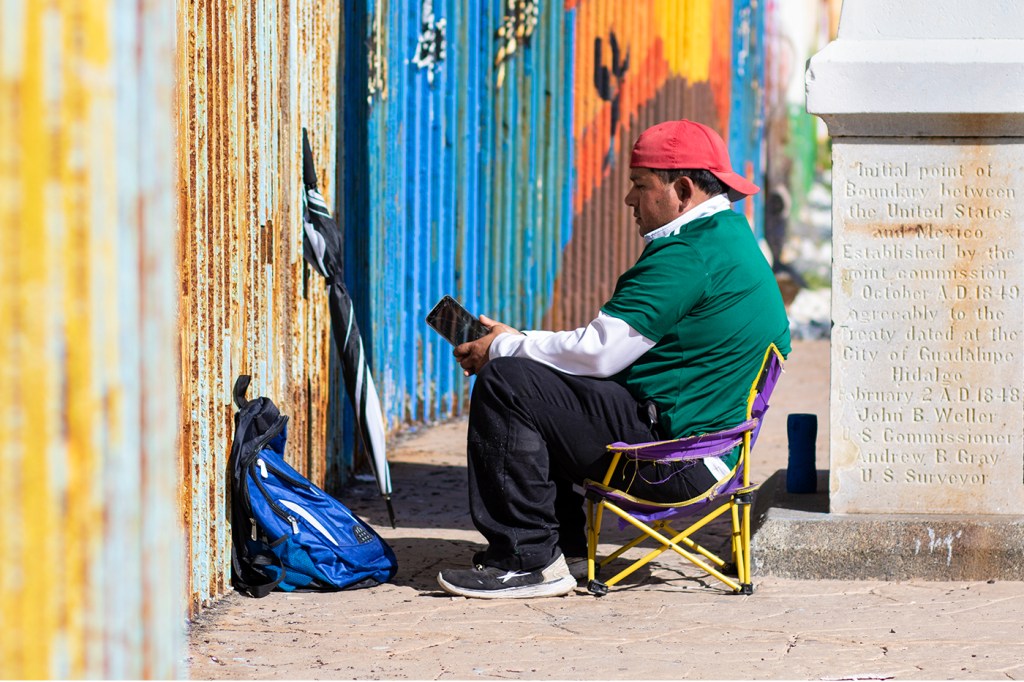Waylaid in Tijuana chronicles of the stories behind the migrants stranded at the US-Mexico border

Tim Ouillette wants to tell you a story.
Imagine you’re a Haitian migrant living in Brazil. After the catastrophic 2010 earthquake decimated Haiti, drawn by what seemed like a promising future in Brazil, you joined thousands of other Haitians and traversed treacherous jungles to get there.
But just as Brazil was set to host the 2014 FIFA World Cup, the economy collapsed in what would be the country’s worst recession in 25 years. Once again, you’re left with two options: stay in a collapsing economy, or embark on another treacherous journey.
Many chose the latter, with the United States in mind as their destination, says Ouillette, an associate professor of communication studies at Northeastern, who has chronicled the stories of migrants in his upcoming documentary, Waylaid in Tijuana.

Tim Ouillette is an associate professor of communication studies in the College of Arts, Media and Design at Northeastern. Photo by Ruby Wallau/Northeastern University
Ouillette has spent parts of the last year in Tijuana, Mexico, where roughly 3,000 Haitian migrants are stranded, recording migrants’ stories about the difficult road that brought them there, and interviewing U.S. and Mexican border officials and policymakers to get their perspectives.
Migrants who set out from Brazil travel north through the Amazon rainforest, and arrive at the Darién Gap, a region of mountains, forests, and swampland at the border between Panama and Colombia that is considered one of the world’s most dangerous jungles.
After navigating through 60 miles of perilous jungle, migrants pay smugglers thousands of dollars to get through the closed borders of several Central American countries before reaching the border between the United States and Mexico. Those who survived and made it to the San Ysidro Port of Entry just a few miles south of San Diego before 2016 had a chance at entering the U.S.
But in September 2016, in response to the growing number of Haitians at the border, the Obama administration resumed deportation of migrants from the country who did not have legal permission to stay in the U.S.. This meant that the majority of migrants who lacked the proper visas were turned away. Now you’re stuck at another dead end, in another foreign country with another decision to make: Stay and wait indefinitely for your documents to be processed, or embark on another journey.
“The migrant stories were all tragic and touching, and listening to their stories and then having expert testimonies from border authorities and policy makers, that helped to frame things,” Ouillette says. “When I got there, I was unaware of the complexity of the systems that existed at the border.”
He teamed up with Katrina Burgess, an expert on Latin American politics at Tufts University who is the executive producer of the film, and Aída Silva, a native of Tijuana and a local scholar who guided him through the city. Through two visits to the border city, Ouillette conducted 30 interviews with “authorities at the border, activists, religious leaders, and migrants.”
Ouillette describes Tijuana as a city with two distinct sides. On one side, he saw an international hub of different cultures melded together. On the other, he saw the violence that has recently been associated with the border city, the most violent city in the world in 2018, per statistics released by the Mexican government.
“Its food scene, arts, culture, Tijuana has all the elements of a great city,” Ouillette says. “It reminds me of New York City in the 80s in the sense that it’s gritty and edgy but has the elements of internationalism and culture that you want to see in a city. The flip side, it’s also the most violent city in the world, and migrants are oftentimes the most vulnerable because they’re carrying their wealth on them.”
Ouillette says he wants the audience to realize how complicated the situation is for many of the migrants, and that by shedding light on their stories, it will encourage empathy towards them.
“For me, I see a lot of insensitivity in popular media,” Ouillette says. “We’re in a divided country right now. That’s no secret and I see a lot of insensitivities towards migrants. I want to shed that.”
The film is currently “95 percent” done. It has been shown at pre-screenings on both Northeastern’s Boston campus and at Tufts University. Ouillette says he hopes to finish the film before the new year.
For media inquiries, please contact media@northeastern.edu.




